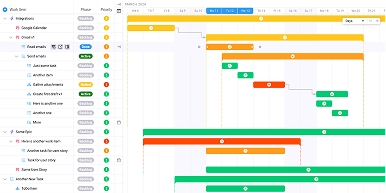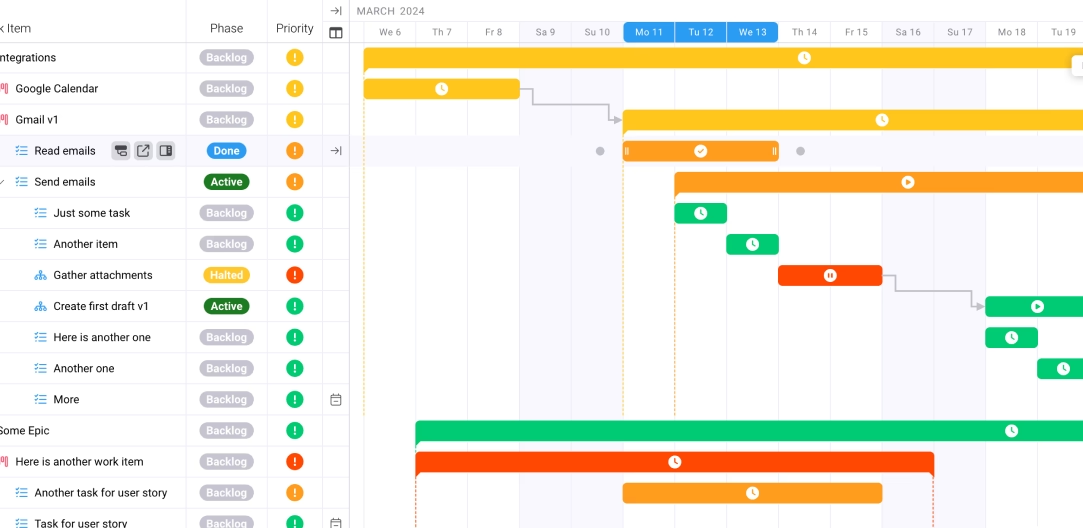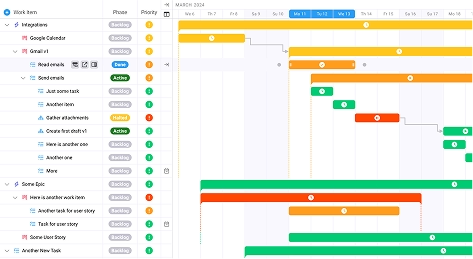
Managing Remote Marketing Teams: Best Practices for Distributed Agencies
Key takeaways:
- Remote teams require fundamentally different management approaches than traditional in-office models, with emphasis on outcome-based performance rather than activity monitoring
- Communication infrastructure is the foundation of successful distributed marketing teams, requiring multiple channels and clear protocols for different types of collaboration
- Technology stack optimization can increase team productivity by up to 80% when properly implemented and integrated
- Cultural alignment and team bonding become more critical (not less) in remote environments, requiring intentional virtual relationship-building strategies
The landscape of marketing agencies has fundamentally shifted. While 74% of Gen Z and Millennial managers work with distributed teams, many agencies still struggle with the complexities of managing remote marketing teams effectively. The challenge isn’t just about geography—it’s about maintaining creative collaboration, ensuring consistent client deliverables, and fostering innovation when your team is scattered across different time zones, cultures, and work environments.
But here’s what most agencies get wrong: they treat remote team management as a temporary adaptation rather than a strategic competitive advantage. The reality is that successful distributed marketing teams don’t just replicate in-office processes virtually—they reimagine how modern marketing gets done.
The Current Challenge: What’s Broken in Remote Marketing Team Management
The shift to distributed marketing teams has exposed fundamental flaws in traditional agency management approaches. 22% of the workforce (36.2 Million Americans) will work remotely by 2025, yet most agencies are still using management frameworks designed for physical proximity.
The core problem lies in what we call the “visibility bias”—the assumption that physical presence equals productivity and engagement. This outdated thinking leads to micromanagement, inefficient check-ins, and a culture of surveillance rather than empowerment. Marketing leaders consistently report three primary challenges when managing distributed teams:
Communication Fragmentation: Without natural hallway conversations and impromptu brainstorming sessions, creative ideas get lost in email chains and scattered across multiple platforms. Teams report feeling disconnected from the creative process, leading to campaigns that lack the innovative spark that comes from collaborative ideation.
Project Coordination Complexity: Managing multiple client campaigns across distributed teams creates coordination nightmares. Without clear visibility into who’s working on what, when deliverables are due, and how different components connect, projects frequently miss deadlines or suffer from quality inconsistencies.
Client Relationship Strain: 93% admit it’s challenging to find professionals with the right mix of skills, and when distributed teams struggle to maintain consistent client communication, relationships suffer. Clients expect seamless experiences regardless of where their account team is located.
The traditional response has been to add more meetings, create more reports, and implement more tracking tools. This reactive approach actually exacerbates the problem by creating administrative overhead that reduces the time available for actual marketing work.
The Strategic Framework: The Distributed Excellence Model
Successful remote marketing team management requires a fundamental shift from activity-based management to outcome-based leadership. We call this the Distributed Excellence Model, which operates on four core principles:
Principle 1: Asynchronous-First Collaboration
Instead of forcing real-time interaction for everything, structure work so that the most important creative and strategic work can happen when individuals are at their peak performance, regardless of time zone. This doesn’t mean eliminating meetings—it means being strategic about when synchronous collaboration adds genuine value.
Principle 2: Transparent Progress Systems
Create visibility into project status, individual contributions, and team performance without creating a surveillance culture. This involves implementing systems that make progress naturally visible rather than requiring constant reporting.
Principle 3: Cultural Intentionality
Remote teams don’t automatically develop the cultural bonds that drive creative excellence. This requires deliberate investment in relationship-building, shared experiences, and cultural rituals that work in distributed environments.
Principle 4: Technology Integration
Rather than using tools as digital replacements for physical processes, reimagine workflows to leverage technology’s unique advantages for marketing team collaboration.
Implementation Tactics: Five Core Strategies for Distributed Marketing Excellence
Strategy 1: Establish Communication Architecture
Effective remote marketing teams operate with clear communication protocols that eliminate confusion about when, where, and how information should be shared. Research shows that well-connected teams see a productivity increase of 20-25%, but this only happens when communication is structured, not random.
Implement a three-tier communication system:
Tier 1 – Immediate Response (Under 2 Hours): Use for client emergencies, campaign launches, and time-sensitive creative approvals. Limit to truly urgent matters to prevent communication fatigue.
Tier 2 – Same-Day Response (Within 8 Hours): Standard for project updates, creative reviews, and internal coordination. This covers 80% of day-to-day communication needs.
Tier 3 – Planned Response (24-48 Hours): Use for strategic planning, comprehensive feedback, and detailed project documentation. This allows for thoughtful consideration and reduces reactive decision-making.
The key insight is recognizing that it takes around nine and a half minutes to regain deep focus after switching tasks. Successful agencies batch communication activities rather than allowing constant interruption throughout the day.
Strategy 2: Optimize Project Management for Creative Work
Traditional project management systems fail marketing teams because they’re designed for predictable, linear work rather than the iterative, creative process that drives great campaigns. Marketing agencies need project management frameworks that actually work for distributed creative teams.
Implement campaign-centric project structures that accommodate the creative process:
Creative Brief Phase: Establish clear project parameters, creative objectives, and success metrics before any creative work begins. This prevents scope creep and ensures alignment across distributed team members.
Iterative Development Cycles: Rather than linear project phases, use sprint-based creative cycles that allow for rapid iteration and feedback. This works particularly well for distributed teams because it creates natural checkpoints for coordination.
Integrated Approval Workflows: Create streamlined approval processes that don’t bottleneck on single individuals. Use parallel review structures where appropriate team members can provide input simultaneously.
Studies show that using time-tracking software can increase productivity by up to 80% when integrated with proper workflow management rather than used for surveillance.
Strategy 3: Master Asynchronous Creative Collaboration
The biggest creative challenge in distributed marketing teams is maintaining the collaborative spark that drives innovation. This requires reimagining how creative ideation, feedback, and refinement happen across time zones and working styles.
Implement structured creative collaboration processes:
Digital Brainstorming Frameworks: Use collaborative platforms that allow team members to contribute ideas over extended periods rather than forcing real-time brainstorming. This actually increases creative output because it allows for reflection and build-up on others’ ideas.
Video-First Creative Presentations: When presenting creative work remotely, lead with video walkthroughs that explain the thinking behind creative decisions. This provides context that static presentations cannot convey.
Iterative Feedback Systems: Create feedback loops that capture both immediate reactions and considered responses. Use tools that allow commenting on specific elements while maintaining overall campaign vision.
Research indicates that many employees report feeling more productive working remotely, particularly in creative roles where deep focus time is essential for quality output.
Strategy 4: Build Client Relationships Through Distributed Teams
One of the biggest concerns about remote marketing teams is maintaining strong client relationships. However, distributed teams can actually provide better client service when managed strategically, offering extended coverage hours and specialized expertise regardless of geographic constraints.
Develop client-centric distributed service models:
Dedicated Client Communication Channels: Establish clear primary and secondary contact protocols so clients always know how to reach the right team member. Use client portals to provide 24/7 access to project status and deliverables.
Regular Relationship Maintenance: Schedule consistent client touchpoints that go beyond project updates. Use video calls for relationship building and phone calls for quick clarifications.
Seamless Handoffs: When team members are in different time zones, create detailed handoff procedures that ensure client work progresses smoothly without gaps in service.
Modern marketing agencies are discovering that streamlined marketing campaign management processes actually improve client satisfaction by providing more consistent and transparent service delivery.
Strategy 5: Measure Performance Through Outcomes, Not Activity
Traditional performance measurement in agencies often focuses on billable hours and activity metrics rather than actual contribution to client success and agency growth. Distributed teams require outcome-based performance measurement that aligns individual success with overall business objectives.
Implement results-focused performance systems:
Campaign Impact Metrics: Measure team members based on their contribution to campaign success rather than hours worked or meetings attended. This includes creative quality, strategic thinking, and client satisfaction.
Collaboration Quality Indicators: Track how well team members facilitate distributed collaboration, share knowledge, and contribute to collective success rather than just individual tasks.
Professional Development Progress: In remote environments, career development requires more intentional planning. Measure progress on skill development and career advancement goals.
Leading marketing agencies are adopting marketing agency leadership trends for 2025 that emphasize outcome-based management over traditional activity tracking.
Measuring Success: KPIs and Metrics That Matter
Success in remote marketing team management requires metrics that capture both operational efficiency and creative excellence. Traditional agency KPIs often miss the nuances of distributed team performance, leading to management decisions based on incomplete data.
Team Productivity Metrics:
- Campaign delivery time from brief to completion
- Creative revision cycles per project
- Client approval rates on first presentation
- Cross-team collaboration frequency and quality
Client Satisfaction Indicators:
- Net Promoter Score specific to remote service delivery
- Client retention rates for accounts managed by distributed teams
- Response time to client communications across time zones
- Project budget performance and scope management
Team Engagement Measurements:
- Voluntary participation in team activities and training
- Internal referral rates for new team members
- Career development progress and skill acquisition
- Cultural satisfaction and team bonding effectiveness
Modern agencies are discovering that project management optimization for marketing agency growth requires sophisticated measurement systems that balance efficiency with creativity.
Financial Performance Analytics:
- Revenue per team member in distributed vs. traditional structures
- Cost savings from reduced office overhead
- Profitability improvements from expanded talent access
- Billing accuracy and collection rates in remote operations
The key insight is that successful remote marketing teams often outperform traditional office-based teams on these metrics when management systems are properly optimized for distributed work.
Future Considerations: Emerging Trends and Next Steps
The future of marketing agency management is fundamentally distributed. 32.6 million Americans, comprising 22% of the workforce, are expected to work remotely, and marketing agencies that master distributed team management now will have significant competitive advantages as this trend accelerates.
Artificial Intelligence Integration: AI tools are becoming essential for distributed marketing teams, providing automated project coordination, creative assistance, and performance analytics. Agencies need to develop AI integration strategies that enhance human creativity rather than replacing it.
Global Talent Access: Distributed teams enable agencies to access specialized talent regardless of location. This creates opportunities for more diverse creative perspectives and 24/7 service capabilities for international clients.
Hybrid Service Models: The future likely involves flexible combinations of remote and in-person collaboration, with teams coming together for specific creative intensives while maintaining distributed operations for daily work.
Advanced Collaboration Technologies: Emerging technologies like virtual reality creative spaces and advanced time tracking systems will continue to improve the distributed work experience.
Cultural Evolution: Agency culture is evolving to emphasize outcomes, flexibility, and individual empowerment over traditional hierarchical structures. This cultural shift requires intentional leadership development and change management.
The agencies that thrive in this environment will be those that view distributed team management not as a challenge to overcome, but as a strategic capability to develop. By implementing structured approaches to communication, project management, creative collaboration, client service, and performance measurement, marketing agencies can build distributed teams that outperform traditional office-based structures.
The future of marketing agency success lies not in returning to pre-2020 working models, but in mastering the art and science of managing remote marketing teams. Those who invest in developing these capabilities now will lead the industry as distributed work becomes the dominant model for creative collaboration.
The principles and strategies outlined in this guide provide a roadmap for transformation, but success requires consistent implementation, continuous refinement, and leadership commitment to building truly distributed excellence in marketing team management.
Frequently Asked Questions
How do you maintain creative collaboration in remote marketing teams?
Effective remote creative collaboration requires structured processes for ideation, feedback, and iteration. Use digital brainstorming tools, video-first presentations, and asynchronous contribution methods that allow creativity to flourish across time zones.
What’s the biggest challenge in managing distributed marketing teams?
The primary challenge is shifting from activity-based management to outcome-based leadership, requiring new measurement systems, communication protocols, and performance evaluation methods.
How do remote marketing teams handle client relationships?
Successful distributed teams use dedicated communication channels, regular relationship maintenance calls, and seamless handoff procedures to provide consistent client service regardless of team member locations.
What technology stack is essential for remote marketing teams?
Essential tools include project management platforms, collaborative creative software, integrated communication systems, and CRM platforms that provide visibility into both team performance and client satisfaction.
How do you measure productivity in remote marketing teams?
Focus on outcome-based metrics like campaign delivery times, client satisfaction scores, creative quality indicators, and revenue per team member rather than traditional activity measurements.
What’s the best way to onboard new team members remotely?
Create comprehensive onboarding programs that include virtual mentorship, cultural integration activities, and structured learning paths that help new team members understand both tactical responsibilities and strategic objectives.
How do you handle time zone differences in global marketing teams?
Implement asynchronous-first work processes, establish clear communication response time expectations, and create overlap hours for essential real-time collaboration while respecting individual peak performance times.
What are the cost implications of switching to distributed marketing teams?
While initial technology and training investments are required, distributed teams typically reduce overhead costs, expand talent access, and improve client service capabilities, leading to improved profitability over time.









